|
This is no ordinary run 'o the mill hamper - this is a Cheapskates Style Cleaning Hamper - the best gift ever for the practical people on your gift list.
It will come in at under $20. Cleaning Hamper - $16.10 You will need: 1 plastic bucket - 80c Laundry soap - $2.00 Washing soda - $4.00 Borax - $4.10 White vinegar $1.20 1 packet microfibre cleaning cloths $4.00 Cleaning Tips Grandma Used Cheapskates Washing Powder Print Tip Sheet. Pack all the items into the bucket, wrap with cellophane and tie in a bow with ribbon. You should find all the items at your local supermarket, but if you have time, you'll do better on prices for the microfibre cloths at $2 shops or even a hardware store. For the laundry soap, generic or store brand is fine. A box of four cakes is around $2.20, and you'll find it in the laundry aisle, usually towards the bottom of the shelves. Washing soda (or sodium carbonate) is from the laundry aisle. The common brand name is Lectric Soda, it's in a white packet with red writing on it. You may need to search for it, but it will be there. Borax is the mystery item on this list. Not all supermarkets keep it on the shelf, both my local Coles and Woolworths do, but you need to search for it. It's in the cleaning aisle, towards the pest control section. At Coles the brand is Bare Essentials, in a white tub with a pink lid. If you can't find it at the supermarket, don't despair. You'll get it at a hardware store, and definitely at Bunnings. For the microfibre cloths, if you have the time to zip into your favourite $2 shop, they'll be much cheaper than at the supermarket. If you're pressed for time, check the prices at the supermarket before you toss them in the trolley. Coles sell a pack of three - dusting, glass and kitchen - for $4, Simply Clean. And they're labelled so you know what their use is.
0 Comments
Today I'm going to go over how to clean my next favourite household appliance - the washing machine.
I wash every day except Saturday. Some days I do two loads a day to get bedding and towels clean, or those extra stinky sports clothes or like yesterday Wayne's super filthy, mud stained clothes from our day out on Sunday (he was on his back under a friend's four wheel drive a couple of times - and in a good shirt too!). My washing machine gets a good workout, but it is a newer HE machine and frankly I really do long for my old Hoover. It didn't need to be babied and coddled like this one does. A once-a-month clean kept it going for almost 30 years. My new machine needs to be cleaned regularly, it tells me when it needs to be done, and the process takes three hours and uses three loads of hot water. There is an easier, cheaper and much more energy efficient way to keep your washing machine clean and in tip top shape, and it works. It's the method I've been using for 26 years. First thing you need to do is find out if your washing machine actually has a lint filter. My HE machine doesn't, check your handbook to find out if your machine has a lint filter. If your washing machine is a top loader it should have a lint filter in the agitator. Pull out the top of the agitator and it should have some kind of little bag or basket attached to it. Gently take it off and give it a good clean. You may need to empty the lint out of it first. Then rinse it under hot water. If you use fabric softener then you will also need to soak it for a few minutes in white vinegar. Fabric softeners leave a film over the mesh that actually stops the water from getting through. You need to get rid of this build up. Front loaders have different lint filters - check your handbook to find out where it is and how to get to it. If you empty and rinse the lint filter after every wash you'll stop those black flakes of gunk that sometimes appear on your washing - that's the old muck out of the lint filter flowing back up into the bowl. Yuk! While the lint filter is soaking, get a cloth and a bucket of warm water and add a splash of vinegar (about 1 cup). Use this to wipe around the top of the bowl, under the lid, over the outside of the cabinet etc. Don't forget the inside of the agitator and the fabric softener dispenser. If it's particularly grungy, sprinkle with bi-carb and use this as a scouring powder. Just watch your fingers - the edges of all those ridges and rims can be sharp (guess how I know!). Put the lint filter back together and replace the top of the agitator. Then run your washing machine through a full cycle on the longest and hottest wash cycle (this is the only time I use a hot wash) and add a full 2 litre bottle of vinegar to it. Don't add any clothes or other detergents; let the vinegar work its magic. The vinegar will remove the scum and gunk and any hard-water build up in the bowl and hoses. Wipe over the outside of the machine with a damp cloth and dry. You washing machine will sparkle inside and out. Do this on a regular basis and you'll extend the life of your machine and save on costly maintenance calls. My handbook suggests every 100 washes, for me that's about every two months because of the amount of washing I do. For my mother it's every six months or so as she only does two loads a week. If your family is larger you may need to do this more often. It may seem like a tedious chore but it is worth taking care of this most useful household appliance. Think about what you'd do if you couldn't use your washing machine for a week - hand-washing, paying for the laundromat -and you'll see the benefit quickly. Step 1. Place a dishwasher-safe cup filled with plain white vinegar on the top rack of your empty dishwasher. The vinegar will help to wash away the loose, greasy grime, sanitizes, and helps remove the musty odour.
Step 2. Sprinkle a cup of bicarbonate soda around the bottom of the dishwasher. The bicarbonate soda will help freshen the smell of the dishwasher as well as brighten up the look of the inside of your appliance by removing stains. Step 3. Using the hottest water available, run the dishwasher through a cycle – except for the cup of vinegar, the dishwasher needs to be empty. Now that the dishwasher is clean and running right here are a few tips to keep it that way until the next cleaning. Run a bit of hot water in your sink before running the dishwasher. You will get cleaner dishes if the water starts hot. You can collect the water you run and use it to fill the kettle or for watering plants or other purposes. Run the water until what comes out of the tap feels hot. Make sure your water starts hot enough. Set the thermostat on your hot water service to 50 degrees Celsius. Water that is cooler than this won’t be hot enough to clean properly and water that is any hotter could scald. A routine dishwasher cleaning is a good habit to get into. Mark it on the calendar to do regularly each month, the same day you do the drains and the washing machine. Today I'm going to go over how to clean my next favourite household appliance - the washing machine.
I wash every day except Saturday. Some days I do two loads a day to get bedding and towels clean, or those extra stinky sports clothes or like yesterday Wayne's super filthy, mud stained clothes from our day out on Sunday (he was on his back under a friend's four wheel drive a couple of times - and in a good shirt too!). My washing machine gets a good workout, but it is a newer HE machine and frankly I really do long for my old Hoover. It didn't need to be babied and coddled like this one does. A once-a-month clean kept it going for almost 30 years. My new machine needs to be cleaned regularly, it tells me when it needs to be done, and the process takes three hours and uses three loads of hot water. There is an easier, cheaper and much more energy efficient way to keep your washing machine clean and in tip top shape, and it works. It's the method I've been using for 26 years. First thing you need to do is find out if your washing machine actually has a lint filter. My HE machine doesn't, check your handbook to find out if your machine has a lint filter. If your washing machine is a top loader it should have a lint filter in the agitator. Pull out the top of the agitator and it should have some kind of little bag or basket attached to it. Gently take it off and give it a good clean. You may need to empty the lint out of it first. Then rinse it under hot water. If you use fabric softener then you will also need to soak it for a few minutes in white vinegar. Fabric softeners leave a film over the mesh that actually stops the water from getting through. You need to get rid of this build up. Front loaders have different lint filters - check your handbook to find out where it is and how to get to it. If you empty and rinse the lint filter after every wash you'll stop those black flakes of gunk that sometimes appear on your washing - that's the old muck out of the lint filter flowing back up into the bowl. Yuk! While the lint filter is soaking, get a cloth and a bucket of warm water and add a splash of vinegar (about 1 cup). Use this to wipe around the top of the bowl, under the lid, over the outside of the cabinet etc. Don't forget the inside of the agitator and the fabric softener dispenser. If it's particularly grungy, sprinkle with bi-carb and use this as a scouring powder. Just watch your fingers - the edges of all those ridges and rims can be sharp (guess how I know!). Put the lint filter back together and replace the top of the agitator. Then run your washing machine through a full cycle on the longest and hottest wash cycle (this is the only time I use a hot wash) and add a full 2 litre bottle of vinegar to it. Don't add any clothes or other detergents; let the vinegar work its magic. The vinegar will remove the scum and gunk and any hard-water build up in the bowl and hoses. Wipe over the outside of the machine with a damp cloth and dry. You washing machine will sparkle inside and out. Do this on a regular basis and you'll extend the life of your machine and save on costly maintenance calls. My handbook suggests every 100 washes, for me that's about every two months because of the amount of washing I do. For my mother it's every six months or so as she only does two loads a week. If your family is larger you may need to do this more often. It may seem like a tedious chore but it is worth taking care of this most useful household appliance. Think about what you'd do if you couldn't use your washing machine for a week - hand-washing, paying for the laundromat -and you'll see the benefit quickly. As I was whizzing through the checkout at my local supermarket recently I was astounded to hear the fellow on the checkout telling the lady in front of me that she must have the cleanest house around because she had so many different cleaning products in her trolley. She had a multi-purpose spray, window cleaner, a gel cleaner, another gel bathroom cleaner, a bleach, a box of washing powder, a spray bottle of ironing aid, a spray can of furniture polish, a shower cleaner and two bottles of toilet cleaners. Brother what a load of money she was about to pour down the drain! I couldn't help myself and joined the conversation when it became a "but I have to have them or I just can't keep the house clean" talk. I politely pointed out that a bottle of vinegar, a box of bicarb, a jar of borax, a bar of soap and perhaps a little elbow grease would do the same job as all these cleaners for a fraction of the price and damage to the environment. I was very excited when she decided I was right and she didn't want all those cleaners. I did feel a little sorry for the people behind us as she had them taken off her bill, but I was so proud of her, especially when she said she already had everything she needed to clean the Cheapskates way in her cleaning cupboard. This experience had me thinking: just how many of us have never tried to clean using cheaper alternatives because we didn't know there were any or we weren't sure how to use them? You can make your own household cleaners easily and best of all cheaply using these tried and true recipes. As well as saving you money, these cleaners will save you time and effort and rid your home of some nasty chemicals too. If you were to make all the recipes below you would have a cleaning solution for just about every household cleaning problem for the grand total of $6.72! If you were to add the equivalent of these products to your shopping trolley you would add another $44.50 to your grocery bill. By making them yourself you are saving around $37.80! What an incredible saving! By keeping some very inexpensive and basic supplies in your cleaning cupboard you can clean your whole house for just a few cents rather than hundreds of dollars. Bi-carbonate Soda (bi-carb or baking soda) – is a powerful cleaning agent on its own, even more powerful when combined with other materials. Borax - found in the cleaning aisle, usually next to the Drano. I use Harpers, in a white tub with a red lid. It's usually on the bottom shelf. Vinegar – is made from fermented apples, grapes, sugar cane, malt or wine. It is an acid and a mild disinfectant. Washing Soda – buy it in the supermarket under the brand name Lectric Soda. It is a good water softener. Eucalyptus Oil –can be bought at supermarkets, chemists, health food and hardware stores. Use eucalyptus oil to remove sticky residue, as an inhalant and a disinfectant or a cleaner. It is toxic, so keep it away from children and pets. It will also damage plants, so beware when using it in the garden. Window Cleaner Cost: $0.10 for 250ml extra strong window cleaner 1/2 tsp washing up detergent 3 tbsp vinegar 2 cups water 1 drop blue food colouring (optional) Blend well and store in spray bottle. Scouring Powder Cost: $1.89 for 600g scouring powder 1 cup bi-carb soda 1 cup borax 1 cup salt Blend and store in container. Furniture Polish This is so easy to make, and it works! Cost: $1.13 for 375ml furniture polish 1 cup vegetable oil 1/2 cup lemon juice Pour oil and lemon juice into a squirt bottle or jar. Stir to combine. To use, dip dust cloth or rag into oil, blot the oil by folding the cloth together, and then dust your furniture. Leaves a beautiful finish! Washing Powder Cost: $1.88 for 90 washes 1 bar laundry soap 1 cup washing soda 1/2 cup borax. Grate soap. Add washing soda and borax. Use 3 teaspoons per load for top loading machine, 2 teaspoons per load for front loader. Super Effective Weed Spray Cost: $0.40 for 4 litres weed spray 4 litres white vinegar 1 cup salt 1 tbsp washing up detergent. Mix well. Spray on weeds to kill them. This is a very effective weed spray so only spray it on the things you want to kill. It is excellent for weeding paths and pavers and along the edges of garden beds. Shared from Debt Free, Cashed Up and Laughing The last couple of days have been good blanket washing days - bright, warm sunshine and a gentle breeze, so I've taken advantage and washed all the winter blankets ready to store them for the summer.
I use this wool wash recipe, which is based on the Martha Gardener Wool Mix available at supermarkets. I've used it for 30 years on all our woollens and delicates and anything clothing or manchester that is stored away. It leaves woollens especially soft and clean, and helps to deter bugs like silverfish and moths that like to feast on our woollies. Ingredients: 4 cups Lux flakes* 4 cups boiling water 1 cup methylated spirits 2 tbsp eucalyptus oil Method: Mix together and bottle. To use dissolve mixture in hot water, cool before gently kneading woollens to wash. Rinse well and dry carefully in the shade, preferably flat to retain shape. *Lux flakes - you can use any pure soap flakes or grate cakes of pure soap to get the flakes. Depending on the size of the cakes of soap you'll need 2 or 3. If you use the zester side of your grater the soap will dissolve easily and quickly. From the Laundry: Manchester Tip Store To most people an egg shell would be rubbish, tossed in the bin and sent to landfill. Some keen gardeners may compost them or use them as snail repellent. Folk with chooks may grind them and add them to their chook's food as shell grit. But most people just toss them.
I have a little dish that sits on the sink and whenever we use an egg, the shell gets rinsed in cold water and then put into the dish. When I need egg shell for something, it's right there, ready and waiting to be used. Egg shells are surprisingly useful. Here's a list of 10 ways I use egg shells around our home. 1. Use egg shells to whiten and soften linen. Soak greying linens in boiling water with the juice of a lemon and two or three ground egg shells added. Let them soak overnight, then rinse and hang in the sun to dry. The linens will be white and soft, no nasty chemical whiteners or softeners needed. 2. In the garden to keep snails and slugs off seedlings. Just crush the egg shell and sprinkle it around the tiny plants. Snails and slugs won't travel over the sharp edges so your plants will be safe - from those predators at least. 3. Add them to chook food. Egg shells are a great source of calcium and grit, two things hens need to produce nice health eggs. Wash the egg shells and when you have a few grind them, either in a blender, with a stick blender or with a mortar and pestle and add it to the chook food. 4. Boil the shells in your coffee. At home we have a coffee maker but when we're camping we use an old fashioned stove top percolator. Adding egg shells to the percolator with the coffee grounds takes away the bitterness than can happen when coffee is boiled accidentally. 5. Use them to feed tomato plants. Calcium rich, crushed egg shell is a good source of this mineral for tomato plants. Tomatoes need calcium to prevent blossom end rot, a common tomato problem. Put a couple of egg shells in the hole before you plant your tomato to give it a boost. Then through the growing season grind egg shells, sprinkle them around the base of the tomato and water in. 6. As tiny seedling starters. Rinse out the egg shells, poke a couple of tiny drainage holes in the bottoms and fill with potting mix. Plant your seeds and when they are ready to be transplanted, gently squeeze the egg shell to crack it and then plant it intact in the ground. 7. Compost them. Nothing more needs to be said. 8. You don't compost? No problem, crush them, sprinkle over the soil and then lightly rake them in. 9. Turn them into ornaments. Rinse them well and let them dry. Then let your creative streak go to town. Paint them, add glitter and sequins, fill them with cotton wool, add little tiny ornaments, cover them with braid, glue on a ribbon hanger - use your imagination! 10. Add them to the bird feeder. Crush them up and mix in with the bird seed to give the wild birds that visit your garden a treat. So how do you use egg shells? Share your idea in the comments below Monday I explained how to clean and maintain your dishwasher. Today I'm going to go over how to clean my next favourite household appliance - the washing machine. I wash every day except Saturday. Some days I do two loads a day to get bedding and towels clean, or those extra stinky sports clothes or like yesterday Wayne's super filthy, mud stained clothes from our day out on Sunday (he was on his back under a friend's four wheel drive a couple of times - and in a good shirt too!). My washing machine gets a good workout, but it is a newer HE machine and frankly I really do long for my old Hoover. It didn't need to be babied and coddled like this one does. A once-a-month clean kept it going for almost 30 years. My new machine needs to be cleaned regularly, it tells me when it needs to be done, and the process takes three hours and uses three loads of hot water. There is an easier, cheaper and much more energy efficient way to keep your washing machine clean and in tip top shape, and it works. It's the method I've been using for 26 years. First thing you need to do is find out if your washing machine actually has a lint filter. My HE machine doesn't, check your handbook to find out if your machine has a lint filter. If your washing machine is a top loader it should have a lint filter in the agitator. Pull out the top of the agitator and it should have some kind of little bag or basket attached to it. Gently take it off and give it a good clean. You may need to empty the lint out of it first. Then rinse it under hot water. If you use fabric softener then you will also need to soak it for a few minutes in white vinegar. Fabric softeners leave a film over the mesh that actually stops the water from getting through. You need to get rid of this build up. Front loaders have different lint filters - check your handbook to find out where it is and how to get to it. If you empty and rinse the lint filter after every wash you'll stop those black flakes of gunk that sometimes appear on your washing - that's the old muck out of the lint filter flowing back up into the bowl. Yuk! While the lint filter is soaking, get a cloth and a bucket of warm water and add a splash of vinegar (about 1 cup). Use this to wipe around the top of the bowl, under the lid, over the outside of the cabinet etc. Don't forget the inside of the agitator and the fabric softener dispenser. If it's particularly grungy, sprinkle with bi-carb and use this as a scouring powder. Just watch your fingers - the edges of all those ridges and rims can be sharp (guess how I know!). Put the lint filter back together and replace the top of the agitator. Then run your washing machine through a full cycle on the longest and hottest wash cycle (this is the only time I use a hot wash) and add a full 2 litre bottle of vinegar to it. Don't add any clothes or other detergents; let the vinegar work its magic. The vinegar will remove the scum and gunk and any hard-water build up in the bowl and hoses. Wipe over the outside of the machine with a damp cloth and dry. You washing machine will sparkle inside and out. Do this on a regular basis and you'll extend the life of your machine and save on costly maintenance calls. My handbook suggests every 100 washes, for me that's about every two months because of the amount of washing I do. For my mother it's every six months or so as she only does two loads a week. If your family is larger you may need to do this more often. It may seem like a tedious chore but it is worth taking care of this most useful household appliance. Think about what you'd do if you couldn't use your washing machine for a week - hand-washing, paying for the laundromat -and you'll see the benefit quickly. This post has been shared from Debt Free, Cashed up and Laughing Cheapskater Elizabeth wrote "Keep your home scented and fresh all year round with a beautiful homemade air freshener.
You will need: 6 Drops Eucalyptus Oil 10 Drops Rose Oil 10 Drops Lavender Oil A small dish or bowl, about 1 cup capacity Half fill the dish with boiling water. Add the oils and stir. The heat from the water will warm the oils and your home will smell absolutely wonderful." Ceramic tiles certainly do make cleaning the kitchen easier, but sometimes even they can be hard to clean, especially the splashback behind the stove or cooktop. When the tiles become splattered with grease that is stubborn and hard to wipe off put a pot of water on one of the back burners and bring it to the boil with the lid off. The steam from the pot will soften the grease spots making them easy to wipe off with a clean cloth. Don't waste the water, use it for a hot drink or let it cool and use it on your indoor plants.
From Debt Free, Cashed Up and Laughing |
Archives
April 2020
Categories
All
|

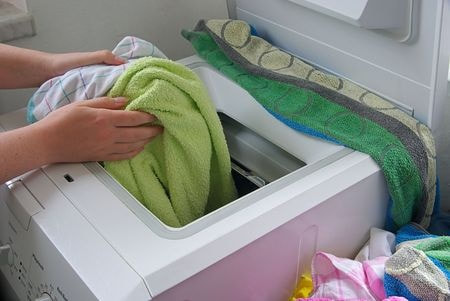
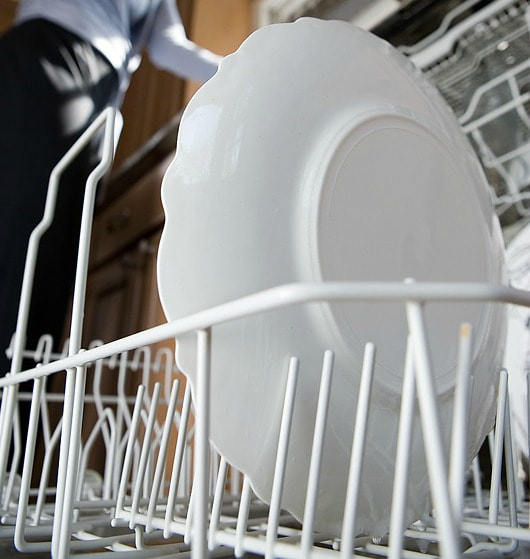
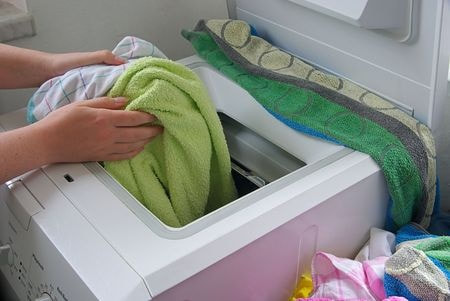
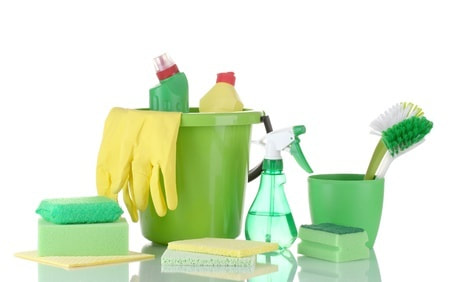
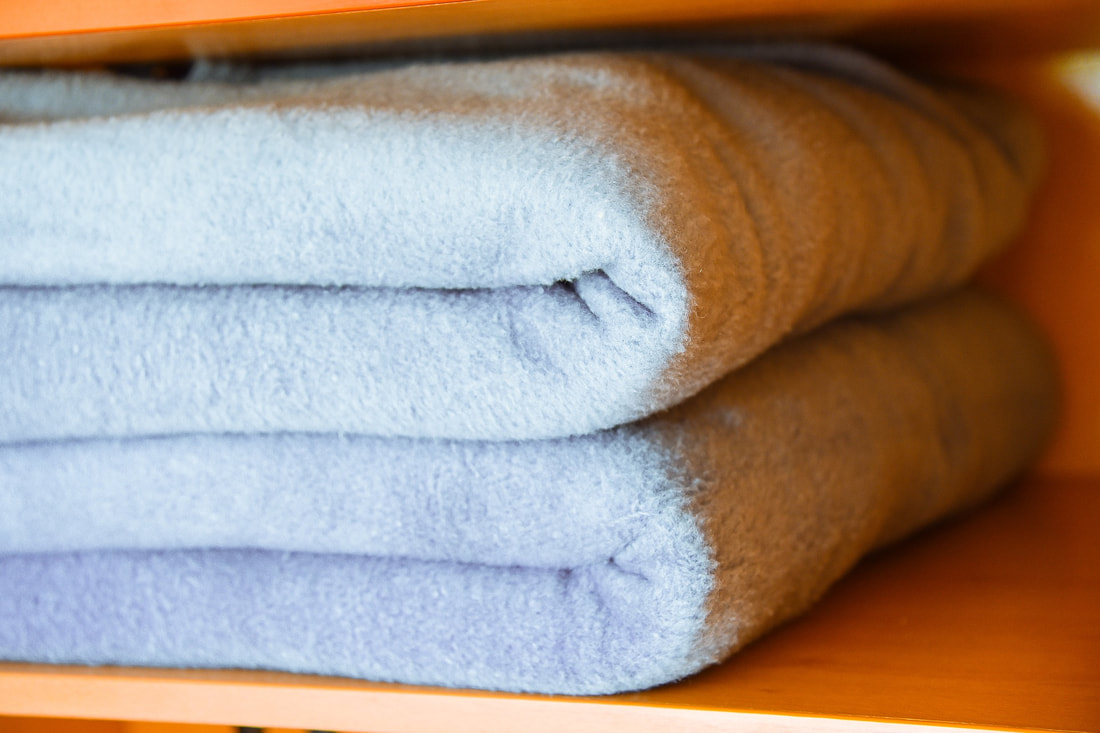
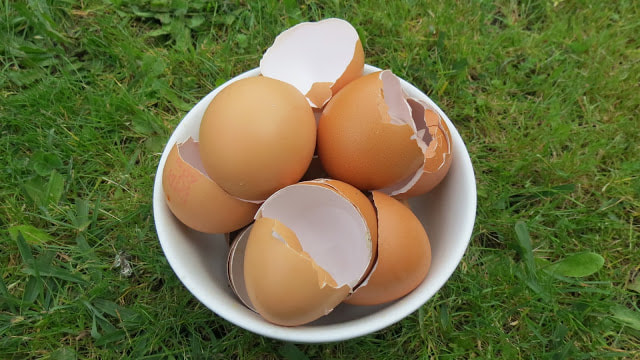
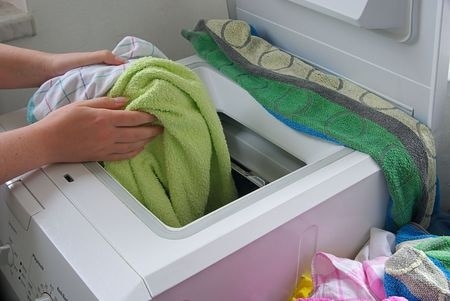


 RSS Feed
RSS Feed